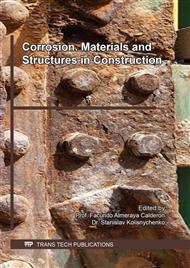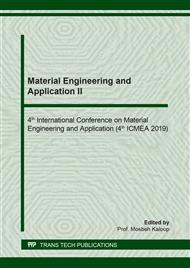p.3
p.9
p.14
p.20
p.26
p.36
p.41
p.48
Mechanical and Shrinkage Behaviors of Ductile Fiber-Reinforced Polymer Repair Mortar
Abstract:
Repair mortar (RM) with dense texture and high anti-crack is cost-effective for application onto the surface of concrete structure to effectively delay the detachment of concrete protective layer and the corrosion of steel bars. Here, the effects of ductile fiber and polymer latex on the flexural strength (ft), compressive strength (fc), bond strength (fb), and shrinkage rate (δr) of fiber-reinforced polymer repair mortar (FP-RM) were comprehensively studied. Results show, the individual doping of polymer latex can improve the ft, fb, and the toughness (the ft/fc ratio) of P-RM, and the fb is increased by 75.78% with respect to the plain mortar, which imply polymer ingredient is essential to P-RM. Some ductile fibers individual dosage also can enhance the ft, fc, and δr of F-RM, respectively; When the polymer latex and ductile fiber are simultaneously doped into the FP-RM mortar together, the ft and fb of FP-RM can be increased up to 9.4MPa, and 2.52MPa, respectively, in tandem with 40.54% reduction of δr, showing superior synergy effect.
Info:
Periodical:
Pages:
14-19
Citation:
Online since:
May 2020
Authors:
Price:
Сopyright:
© 2020 Trans Tech Publications Ltd. All Rights Reserved
Share:
Citation:



